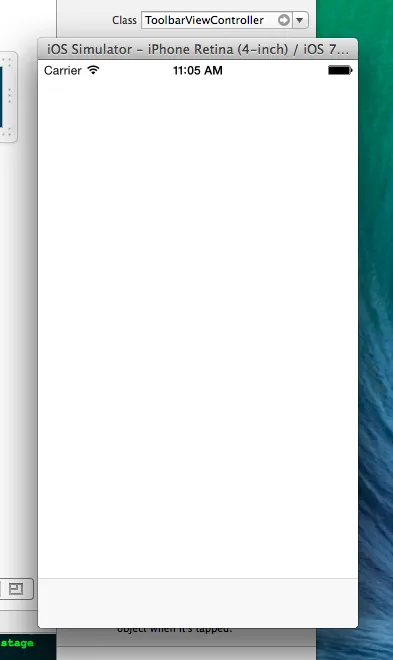我需要创建一个
首先,我创建了一个
UITabBarController的子类,以便完全替换UITabBar视图为一个自定义视图,希望可以在界面构建器中实现。我尝试过了但没有成功。首先,我创建了一个
UITabBarController的子类和一个xib文件。我删除了xib文件中的默认视图,并用一个新的视图替换它,该视图只有60像素高(我的标签栏大小)。我将必要的按钮拖到上面,并配置.h文件如下:@interface ToolbarViewController : UITabBarController
@property (strong, nonatomic) IBOutlet UIView *tabBarView;
@property (strong, nonatomic) IBOutlet UIButton* firstButton;
@property (strong, nonatomic) IBOutlet UIButton* secondButton;
@end
我的xib长这样:

当我启动应用程序时,我看到底部留出了一个空白空间以容纳标签栏,但实际上我没有看到标签栏:

更新:我意识到我实际上没有在.m文件中启动xib文件。有人知道我该如何正确地做这件事吗?